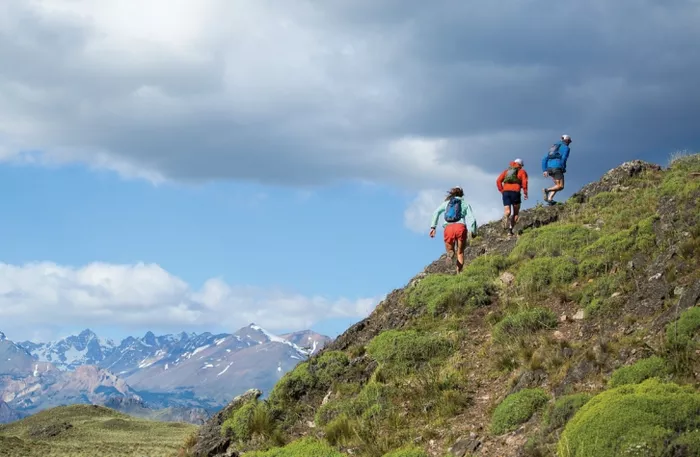In southeastern Alaska, the historic 33-mile Chilkoot Trail is once again open to the public—but with a major caveat. While both the American and Canadian sides of the trail are operational for the season, hikers are currently unable to cross the international border due to ongoing policy restrictions.
The Chilkoot Trail, which spans from Dyea, Alaska, to Bennett, British Columbia, is jointly managed by the U.S. National Park Service and Parks Canada. However, both agencies have announced that crossing the U.S.-Canada border along the trail remains illegal. Hikers must turn back at the boundary.
This cross-border restriction stems from a combination of legacy pandemic-era rules and logistical complications. The trail and border crossing have been closed since 2020 due to COVID-19 and subsequent flood damage on the U.S. side. Although both sections have now reopened, the lack of a formal port of entry on the route prevents legal passage between the two countries.
To legally cross the border, hikers must present themselves at a recognized port of entry. Unfortunately, the Chilkoot Trail does not have one. The closest such location is in Skagway, Alaska—approximately 11 miles from the American trailhead—posing a logistical barrier for through-hikers.
Canada Border Services Agency (CBSA) pointed to difficulties in monitoring such a remote border segment as justification for upholding the closure. In a statement to CBS News, the CBSA explained, “The CBSA is working with its partners to further strengthen border security and for this reason the CBSA is continuing to prohibit entry to Canada along the Chilkoot Trail, as there is not an effective way to monitor who is crossing the border and what they are bringing with them at this remote location.”
The CBSA further stated its policy aligns with that of U.S. Customs and Border Protection (CBP), which also does not permit entry into the U.S. from the Canadian side of the trail. CBP has not issued an official response to inquiries about the matter.
Before 2020, hikers could cross the border along the trail after registering and providing the required documentation. Those rules allowed for a seamless experience on a route that once saw over 15,000 annual visitors before the pandemic, according to the National Park Service.
In May, National Park Service superintendent Angela Wetz expressed enthusiasm about reopening part of the trail. “After five years of closures, Klondike Gold Rush Historical Park is once again proudly welcoming hikers to 16.5 miles of this awe-inspiring trail,” Wetz said.
Despite this progress, the broader context for cross-border outdoor activities remains complex. In January, the CBSA announced it would no longer issue permits for U.S. hikers on the Pacific Crest Trail to enter Canada unless they first report to a port of entry.
“Hikers from the U.S. without a permit who wish to complete the Canadian portion of the trail will from now on be required to first enter Canada via a designated port of entry,” the agency stated, reinforcing a broader trend of tightening border controls for hikers.
These decisions are playing out against a backdrop of diplomatic tension. Since President Donald Trump’s second inauguration in January, U.S.-Canada relations have cooled further due to controversial comments and policy shifts. In a recent Oval Office meeting with Canadian Prime Minister Mark Carney, Trump suggested a vision of North American unification.
“When you look at that beautiful formation, when it’s together, I’m a very artistic person, but when I looked at that … I said, ‘That’s the way it was meant to be,’” Trump said, in reference to merging Canada with the U.S.
Carney firmly rejected the idea, responding, “It’s not for sale, it won’t be for sale, ever.”
Trump has also linked border tensions to drug trafficking concerns, claiming that large quantities of fentanyl enter the U.S. from Canada. He accused Canadian authorities of insufficient cooperation with U.S. law enforcement and suggested their enforcement was lacking.
However, available data undercuts this claim. In fiscal year 2024, U.S. Customs and Border Protection seized only 43 pounds of fentanyl on the northern border—compared to a staggering 21,100 pounds on the southern border.
Former Canadian Prime Minister Justin Trudeau previously addressed these accusations by citing his government’s $1.3 billion plan to bolster border security. He said this included deploying more helicopters and field personnel, and appointing a “Fentanyl Czar.” Between December 2024 and January 2025, he noted, fentanyl seizures from Canada dropped 97% to just 0.03 pounds.
Meanwhile, illegal border crossings into the U.S. from Canada remain minimal. In fiscal year 2024, CBP reported approximately 11,000 encounters along the U.S.-Canada border, a fraction of the quarter million recorded at the U.S.-Mexico line.
Although the reopening of the Chilkoot Trail offers a glimmer of hope for outdoor adventurers, the lack of a legal path to cross the border continues to hamper a truly complete hiking experience. With no immediate changes announced by either country, hikers must adjust expectations—or prepare for a return route once they reach the boundary.
Related Topics
- Roanoke Gears Up for Nokefest: A Weekend of Music, Art, Camping, and Community Fun
- Arizona Trails: How Hikers Make the Hiking Experience Truly Special
- Britain’s Best Hidden Campsites Revealed for Summer 2025

